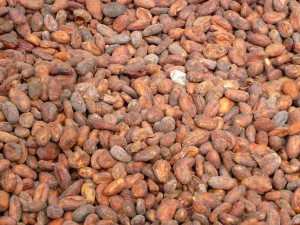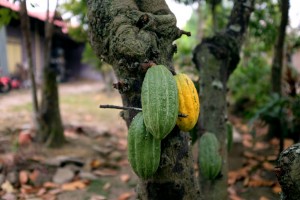As a business, cacao functions much like other commodity materials. There is a vast distance between the people that produce the raw cacao, and the finished bars. In many cases, cacao farmers have never tasted chocolate, and beans which they sell by the pound will be retailed as finished products at much higher prices. Lately, there has been a rise in the establishment of small bean-to-bar operations who are attempting to close the gap between producer and product. Getting this sort of operation up and running is costly and requires much attention to detail, but it is being done. The Grenada Chocolate Company was founded with the intention of being a cooperative between cacao farmers and chocolate makers and runs from one location in Grenada. Similarly, Xocolatl Small Batch Chocolate was started with much assistance from its cacao farmers, and functions in close cooperation with them. The bean-to-bar business model seems fairly ready for the addition of permaculture design systems. Cacao grows ideally in jungle environments, with a layer of shade, and could be established within a food forest that produces many other materials. It could easily be integrated into a healthy permaculture system and refined on-site at an equipped farm.
Cacao and Soils
Cacao’s root systems spread through the surface of the soil, so the composition of topsoil is exceedingly important. Cacao requires high organic content in its soils, as well as ample drainage of standing water and a pH that is neither too alkaline nor too acidic. Coarse grain soil is also desirable, at least at the surface level. It is also a shade growing tree, and is particular in its growing regions (10 degrees to either side of the equator). A location with healthy soils and geology will produce healthy cacao trees, which will in turn produce quality pods. This highlights the permaculture principle of earth care. Soils that regularly receive new organic matter, and that grow other plants which regulate chemical and mineral levels, will be able to grow healthier and more productive cacao trees. Nutrient-depleted soils, or areas with poor drainage (or too much drainage) would be less likely to produce healthy trees. Cacao does not do well as a monoculture, and can quickly deplete a location of soil nutrients. Agroforesting would be extremely geologically practical in relation to cacao, and would provide a soil base that continually replenishes itself.


